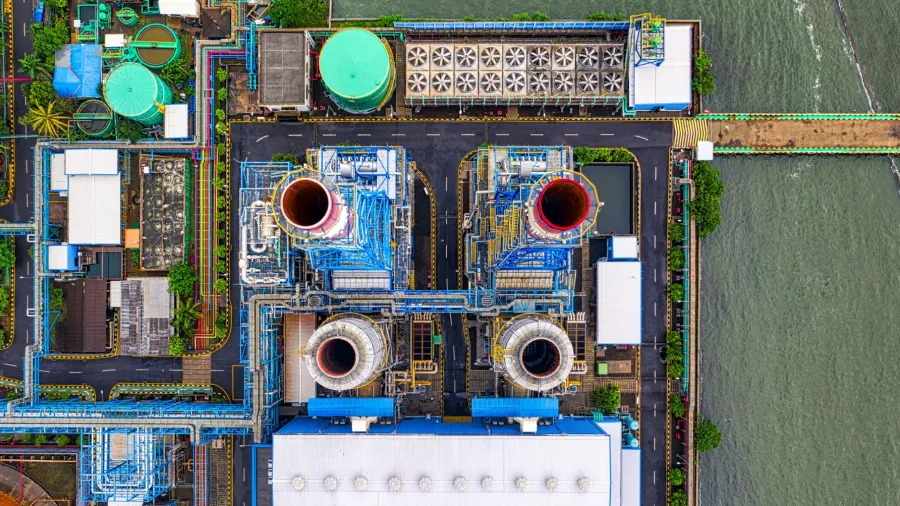
VOX POP: How AI adoption transforms power plant operations
Whilst AI is still nascent, its integration in the power sector has significantly improved power plant operations.
Artificial intelligence (AI) has been widely integrated into the operations of various industries, including the power sector. Asian Power reached out to energy experts to find out how AI adoption has transformed operations at power plants.
Industry leaders underscored the crucial role AI now plays in helping power generators optimise the operation of their plants, monitor performance, and contribute to reducing their facility’s emissions, amongst others.
Penny Murphy, Partner and Regional Digital Services Lead for Asia
Robin Kennish, Asia Lead – Renewables & Climate Change Services
ERM
AI provides immense scalability for supporting energy management and emission tracking as the industry accelerates to a low-carbon energy transition.
The benefit of leveraging AI for high-intensity power operations is the ability to move towards “Smart Grids,” allowing for forecasting and coordinating supply management at scale. With AI technology, we see unprecedented benefits in how power plants collect, synthesise and analyse bulks of data to streamline operations and energy allocation.
AI is now integral in optimising energy generated by renewable energy power plants. CLP Power, for example, uses AI to continuously monitor all wind and solar energy assets in China. The system CLP utilises incorporated digital technologies, including big data and AI, which gives CLP real-time data to help it monitor and manage over 1 gigawatts (GW) of renewable energy assets.
It is beneficial for predictive maintenance. By analysing operational data and equipment performance, AI models can predict when machinery or equipment will likely fail, allowing plant operators to conduct maintenance before costly failures occur.
AI is also used for optimised operations. AI can continuously monitor and analyse real-time data from sensors to adjust operational parameters, such as fuel mix and combustion rates, to achieve optimal efficiency. AI can monitor emissions in real time and optimise combustion processes to minimise emissions, ensuring compliance with environmental standards.
Optimising operations, production process, enhanced monitoring and compliance to standards all help to reduce emissions, minimising the environmental impact of power generation, which is especially crucial given global concerns about climate change and air quality.
Whilst not adopting AI does not mean a power plant will immediately become obsolete, the cumulative effects of missed opportunities can lead to significant disadvantages over time. The pace of technological change in the energy sector means that plants that do not innovate could find themselves outpaced by competitors and facing increased challenges in a rapidly evolving energy landscape.
Dealing with Intermittency. Renewable energy is generated from natural sources, which fluctuate according to the prevailing environment (e.g., wind resource or solar intensity), and seasonal and daily cycles, and this can limit their use or efficiency. The harsh winter in parts of Europe and North America limits wind power generation, which means the grid must switch to more reliance on fossil fuels.
AI is an essential tool to allow power generators and grid operators to handle intermittency and, when coupled with emerging larger-scale battery energy storage solutions (BESS), minimise the need to switch back to fossil fuel generation.
The energy sector is evolving rapidly with the rise of renewables, changing demand patterns, and new market structures. AI allows plants to be more agile and responsive. Without it, they may struggle to adapt to these changes.
Sharad Somani
Partner & Head – Infrastructure Advisory
Head of Infrastructure, Asia Pacific
Head of KPMG ESG
The infrastructure sector is among the late adopters of emerging technologies such as AI and machine learning, commonly categorised under the fourth industrial revolution. We believe the key megatrends driving transformation across sectors are: Decarbonisation, Decentralisation, and Digitalisation.
The energy sector is under immense pressure from regulators, policymakers, and environmental activists to reinvent how energy is generated, stored, distributed, and consumed. Energy generation companies have started adopting emerging technologies such as artificial intelligence, machine learning, cloud, and IIoT (Industrial IoT). Whilst it is nascent, many energy generation companies are now exploring and sandboxing innovative use cases to embed AI across the value chain.
One of the areas where AI can make a significant difference is grid stability. In recent years, the introduction and adoption of Distributed Energy Resources, Electric Vehicles, and Community Energy Storage are impacting grid stability, and it is also an area of concern for regulators.
Generation companies need technology and policy-level interventions to manage generation capability to respond to dynamic demand scenarios, ensure grid stability, and avoid over/under-generation. By leveraging AI, thermal and clean energy generating companies can contribute towards grid stability through load forecasting, optimising generation, frequency regulation, and assisting in predictive demand management.
Thermal power plants are categorised as critical infrastructure and integrating AI can enhance their cyber security resilience. AI algorithms continuously monitor network traffic and system behaviour to detect unusual patterns that may indicate a cyberattack. Deviations from normal operations trigger alerts for further investigation and review. AI-powered cybersecurity platforms can automate threat detection and intelligence, provide firewall optimisation, detect and prevent intrusion, and detect phishing.
Thermal power plants also face pressure to reduce emissions, decarbonise energy generation, and improve overall sustainability. AI can assist thermal power plants in reducing their emissions by adjusting the fuel-air mixture and combustion parameters in real-time. AI can also help operators reduce fuel wastage, thereby increasing fuel efficiency largely through process optimisation and simulation.
Additionally, AI is applied to strategise the positioning and alignment of clean energy systems like solar panels and wind turbines, aiming to maximise their energy output. It can create highly detailed plant designs maximising asset yield and reducing the gestation time involved in setting up energy plants.
AI can help reduce unplanned outages across thermal units through alarms and warnings and help effectively manage dynamic operations and preventive power equipment maintenance. Artificial intelligence-powered maintenance platforms can continuously monitor the health of equipment in real-time against industry-accepted performance benchmarks. AI can process extensive datasets, facilitating the identification of patterns. Additionally, AI-driven maintenance platforms can simulate scenarios for a virtual assessment of equipment fitness.
For example, Aboitiz Power Corporation, a vertically integrated leader in power generation, distribution, and retail electricity services in the Philippines, uses industrial AI to deliver predictive maintenance strategies and achieve its availability and reliability targets at its Davao Thermal South coal plant. Aboitiz Power has improved visibility on critical assets, providing early warning of asset failures and empowering plant personnel to shift from a reactive to a proactive maintenance approach with Reliability Centred Maintenance in place.
Renewable energy generation companies such as those operating through solar, wind, and geothermal sources install the assets in remote geographic locations to generate energy. Maintaining them takes work, unlike thermal power plants. Only some start-ups offer autonomous robots to take up the remote cleaning and maintenance of these assets on the ground. These robots are powered by AI algorithms that, using image recognition technology, can do an inspection and send ground photos to remote control centres for necessary action.
Energy transition is the most pressing agenda today, and to meet the climate goals, energy generation companies need to innovate using AI and emerging technologies. AI and other emerging technologies can deliver immense value to power plant companies and help them reimagine how they manage day-to-day operations, compliance, and performance.



















 Advertise
Advertise






